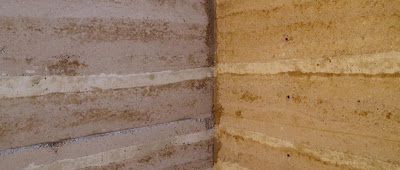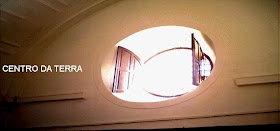
Modern earth buildings: Materials, engineering,
constructions and applications
Edited by M. Hall,
University of Nottingham, UK, R Lindsay, Earth Structures Pty Ltd, Australia
and M Krayenhoff, SIREWall Inc, Canada
Woodhead Publishing Series
in Energy No. 33
- provides an essential exploration of the materials and techniques key to
the design, development and construction of modern earth buildings
- comprehensively discusses design and construction issues, materials for
earth buildings, construction techniques and modern earth structural
engineering, among other topics
- examines the application of modern earth construction through
international case studies
The construction of earth buildings has been taking place worldwide for
centuries. With the improved energy efficiency, high level of structural
integrity and aesthetically pleasing finishes achieved in modern earth
construction, it is now one of the leading choices for sustainable, low-energy
building. Modern earth buildings provides an essential exploration of
the materials and techniques key to the design, development and construction of
such buildings.
Beginning with an overview of modern earth building, part one provides an
introduction to design and construction issues including insulation, occupant
comfort and building codes. Part two goes on to investigate materials for earth
buildings, before building technologies are explored in part three including
construction techniques for earth buildings. Modern earth structural
engineering is the focus of part four, including the creation of earth masonry
structures, use of structural steel elements and design of natural
disaster-resistant earth buildings. Finally, part five of Modern earth
buildings explores the application of modern earth construction through
international case studies.
With its distinguished editors and international team of expert
contributors, Modern earth buildings is a key reference work for all
low-impact building engineers, architects and designers, along with academics
in this field.
ISBN 0 85709 026 7ISBN-13: 978 0 85709 026 3
July 2012
800 pages 234 x 156mm hardback
CONTENTS
PART 1 INTRODUCTION TO MODERN EARTH BUILDINGS
Overview of modern earth building
M R Hall, University of Nottingham, UK, R Lindsay, Earth Structures Group, Australia, and M Krayenhoff, SIREWALL Inc, Canada
- Introduction
- Definition of modern earth building
- The significance of modern earth building in the current and future construction industries
- Changes in the modern earth building industry
- Managing the demands of the modern construction industry
- References
Hygrothermal behaviour and occupant comfort in modern earth buildings
M R Hall and S Casey, University of Nottingham, UK
- Chapter précis
- Introduction
- Hygrothermal loads and modelling
- Thermal and hygric properties of earth materials
- Hygrothermal behaviour and passive air conditioning
- Indoor health and air quality
- Sources of further information
- References
- Appendix: nomenclature
Fabric insulation, thermal bridging and acoustics in modern earth buildings
C J Hopfe, Cardiff University and M R Hall, University of Nottingham, UK
- Chapter précis
- Introduction
- Approaches to fabric insulation
- Thermal bridging theory
- Thermal bridging simulation tools
- Acoustic reverberation
- Sources of further information
- References
- Appendix: nomenclature
Modern earth building codes, standards and normative development
H Schroeder, Bauhaus University Weimar, Germany
- Introduction: A short history of building codes for using earth as a building material
- Types of ‘standards’ for earth building
- Normative documents for earth building
- Selecting the parameters for earth building standards
- New developments in earth building standards
- Conclusions
- References
Passive house design: a benchmark for thermal mass fabric
L Rongen, Rongen Architects, Germany
- Introduction
- Description of Passive House
- Functional principles of Passive House
- Case studies of Passive Houses in different climates
- Examples of Passive House architecture in Germany
- Future trends
- Sources of further information
- References
PART 2 EARTH MATERIALS
ENGINEERING AND EARTH CONSTRUCTION
Soil materials for
earth construction: properties, classification and suitability testingL N Reddi, Florida International University, A K Jain and H-B Yun, University of Central Florida, USA
- Introduction
- Soil formation
- Soil types
- Soil Consistency
- Compaction of soil
- Conclusion
- References
- Appendix
Alternative and recycled materials for earth construction
A Dawson, University of Nottingham, UK
- Introduction
- Classification of alternative and recycled materials
- Types of alternative material
- Characteristics of alternative and recycled materials
- Form of recycled and alternative materials: bulk or binder
- Leaching of materials
- Physical and mechanical properties of alternative and recycled materials
- The use and re-use life cycle
- Future trends and conclusions
- Sources of further information
- References
- Appendix: abbreviations
Soil mechanics and earthen construction: Strength and mechanical behaviour
C E Augarde, Durham University, UK
- Chapter précis
- Introduction
- Basic soil mechanics
- Fundamental soil behaviour
- Effective stress
- Models of shear strength for soils
- Unsaturated soil behaviour
- The use of soil mechanics in earthen construction
- Future trends
- Sources of further information
- References
Soil stabilisation and earth construction: Materials, properties, and techniques
M R Hall, K B Najim and P Keikhaei Dehdezi, University of Nottingham, UK
- Chapter précis
- Introduction
- Lime stabilisation
- Cement and pozzolans
- Bituminous binders and emulsions
- Synthetic binders, polymers and adhesives
- Fibre reinforcement
- Selection tool for modern stabilised earth construction
- References
Integral admixtures and surface treatments for modern earth buildings
R Kebao and D Kagi, Tech-Dry Building Protection Systems Pty Ltd, Australia
- Chapter précis
- Introduction
- Integral admixtures for modern earth construction
- Surface treatment for modern earth buildings
- Future trends
- Sources of information
- References
Weathering and durability of earthen materials and structures
J-C Morel, Q-B Bui, and E Hamard, University of Lyon, France
- Chapter précis
- Introduction
- Water content increase in earthen walls
- Strategies to increase durability of earth walls
- Current tests for assessing the durability of earthen materials
- Surface coatings and finishes
- Long-term performance testing
- Future trends and conclusions
- Acknowledgements
- Sources of further information
- References
PART 3 EARTH BUILDING TECHNOLOGIES AND EARTH CONSTRUCTION TECHNIQUES
History of earth building techniques
P Jaquin, Integral Engineering, UK
- Introduction
- Earth building techniques in Asia
- Earth building techniques in Africa
- Earth building techniques in Europe
- Earth building techniques in North America
- Earth building techniques in South America
- Earth building techniques in Australia
- Conclusions
- References
Stabilised soil blocks for structural masonry in earth construction
B V Venkatarama Reddy, Indian Institute of Science Bangalore, India
- Introduction
- Soil stabilisation techniques
- Production of stabilized soil blocks (SSBs)
- Characteristics of stabilized soil blocks (SSB)
- Cement-soil mortars for stabilized soil block (SSB) masonry
- Stabilised soil block masonry
- Long-term performance, repair and retrofitting of stabilized soil block (SSB) buildings
- Case studies of cement stabilized soil blocks (CSSB) buildings
- References
Modern rammed earth construction techniques
D Easton and T Easton, Rammed Earth Works, USA
- Chapter précis
- Introduction
- Material sourcing
- Proportioning and mixing
- Formwork
- Installation
- Future trends and conclusions
- Sources of further information
Pneumatically impacted stabilized earth (PISE) construction techniques
D Easton, Rammed Earth Works, USA
- Introduction
- Materials used for pneumatically impacted stabilized earth (PISE) construction
- The forming system
- Reinforcement of pneumatically impacted stabilized earth (PISE) walls
- Equipment for proportioning, mixing and placement
- The pneumatically impacted stabilized earth (PISE) method
- Conclusion
- Appendix: Estimating the costs of PISE construction
Conservation of historic earth buildings
G Calabrese, Architect, Australia
- Introduction
- Common forms of deterioration on historic earth buildings
- Conservation of earth architecture
- Case study of the UNESCO heritage site of Diriyah in the Atturaif region of Saudi Arabia
- Case study of earth buildings in Italy: Loreto Aprutino in the Abruzzo Region
- Conclusions
- Sources of further information
- References
PART 4 MODERN EARTH STRUCTURAL
ENGINEERING
Earth masonry
structures: arches, vaults and domesJ F D Dahmen University of British Columbia, Canada and J A Ochsendorf, MIT, USA
- Introduction
- Structural theory for arches, vaults and domes
- Earth masonry arches
- Earth masonry vaults
- Earth masonry domes
- Material properties of earth masonry structure
- Design and construction criteria for earth masonry structures
- Future trends
- Acknowledgements
- Sources of further information
- References
Structural steel elements within stabilised rammed earth (SRE) walling
R Lindsay, Earth Structures Group, Australia
- Introduction
- Structural steel for stabilised rammed earth (SRE) walling
- Design parameters for using structural steel within stabilised rammed earth (SRE) walling
- The use of steel lintels for stabilised rammed earth (SRE) applications
- Steel columns embedded within stabilised rammed earth (SRE) walls
- Structural systems for elevated or ‘precast’ stabilised rammed earth (SRE) panels
- North American structural steel
- Conclusion
- Acknowledgements
- Sources of further information
Natural disasters and earth buildings: Resistant design and construction
H W Morris, University of Auckland, New Zealand
- Chapter précis
- Introduction
- Earthquakes and earth buildings
- Earthquake engineering
- Wind and storms
- Earth building design for wind resistance
- Flood hazards and earth buildings
- Volcanoes and landslides
- Future trends
- Sources of further information
- References
Embankments and earthfill dams: Construction materials and techniques
W Wu, T G Berhe and T Ashour, University of Natural Resources and Applied Life Sciences, Austria
- Introduction
- Types and selection of embankment dams
- Zoning of embankment dams and construction materials
- Embankment dams construction specifics
- Stability analysis of embankment dams
- Maintenance of embankment dams
- Future trends
- Sources of further information
- References
PART 5 APPLICATION OF MODERN
EARTH CONSTRUCTION: INTERNATIONAL CASE STUDIES
North American modern
earth constructionM Krayenhoff, SIREWALL Inc, Canada
- Chapter précis
- Introduction
- Seventh generation thinking and earth construction
- The interplay of indoor and outdoor weather
- Applications of earth construction in hot climates
- Applications of earth construction in wet climates and cold climates
- Optimizing rammed earth compressive strength
- North American style rammed earth
- Case studies of North American earth construction
- Design elegance of modern earth buildings
- Future trends
- Sources of further information
- Acknowledgements
Australasian modern earth construction
R Lindsay, Earth Structures Group, Australia
- Chapter précis
- Introduction
- Uses of stabilized rammed earth in different regions of Australia
- Approaches to material type and selection
- Formwork and construction techniques: the ‘Stabilform system’
- Stabilised rammed earth (SRE) walls
- Designing for thermal comfort
- Standards and specifications for modern earth construction in Australia
- The cost of stabilised rammed earth (SRE) construction in Australia
- Case studies of modern earth buildings in Victoria, Australia
- Future trends
- Sources of further information
- Acknowledgements
- References
European modern earth construction
M R Hall, University of Nottingham and W Swaney, Earth Structures (Europe) Ltd, UK
- Chapter précis
- Introduction
- Conservation and revival of traditional techniques
- Modern earth construction techniques
- Case studies of modern earth buildings throughout Europe
- Future trends
- Acknowledgements
- Sources of further information
- References
- Appendix: European earth building contractors and specialist advisers
Modern rammed earth construction in China
RK Wallis, SIREWALL China, GIGA and AArchitecture, China
- Introduction
- Challenges for modern rammed earth construction in China
- Opportunities for modern rammed earth construction in China
- Approaches to material type and selection
- Construction techniques and formwork
- Case studies
- Future trends
- References

































![Terra [In]cognita project: Earthen architecture in Europe](http://1.bp.blogspot.com/-36uMVOoZMLE/TazQAiZE1KI/AAAAAAAAByA/NCxO8IKqLTg/s285/logoterraincognita.jpg)
